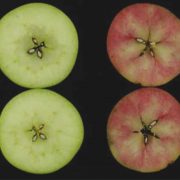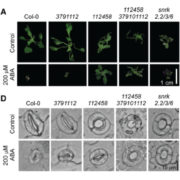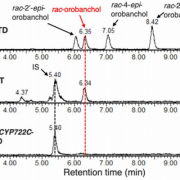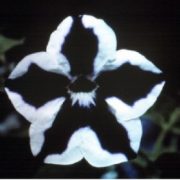Divide to heal: auxin regulates wound-induced cell division in roots (PNAS)
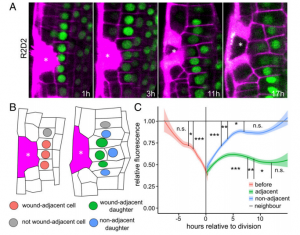 Among the stresses that sessile plants face, wounding is peculiar as it can be caused by both biotic and abiotic sources. While studies of wounding in animal systems have largely focused on the repair mechanisms, less is known about wound healing in plants. In an attempt to throw light on this, Hoermayer and colleagues have characterized auxin as an important regulator of wound healing in root tissues. The authors used UV laser ablation for targeted wounding of root cells, which induced a steep rise in auxin concentration in the cells immediately adjacent to the ablated cells. Using pharmacological agents, they showed this auxin signaling is required for cell expansion and tissue regeneration after wounding. Genetic studies revealed that the perception of auxin is routed through the canonical auxin receptors TIR1/AFBs and the signal is transduced through the wound-inducible ERF115 transcription factor, which accumulates in the adjacent cells. Interestingly, genetic disruption of TIR1 leads to tumor-like over-proliferation of tissue around the wound site, demonstrating the importance of canonical auxin response pathway in regulating the responses. Apart from genetic factors, the authors also found physiological elements like turgor pressure, generated due to disruption of wounded cells, play a role in inducing the subsequent processes of regeneration. (Summary by Pavithran Narayanan @pavi_narayanan) Proc. Natl. Acad. Sci. USA
Among the stresses that sessile plants face, wounding is peculiar as it can be caused by both biotic and abiotic sources. While studies of wounding in animal systems have largely focused on the repair mechanisms, less is known about wound healing in plants. In an attempt to throw light on this, Hoermayer and colleagues have characterized auxin as an important regulator of wound healing in root tissues. The authors used UV laser ablation for targeted wounding of root cells, which induced a steep rise in auxin concentration in the cells immediately adjacent to the ablated cells. Using pharmacological agents, they showed this auxin signaling is required for cell expansion and tissue regeneration after wounding. Genetic studies revealed that the perception of auxin is routed through the canonical auxin receptors TIR1/AFBs and the signal is transduced through the wound-inducible ERF115 transcription factor, which accumulates in the adjacent cells. Interestingly, genetic disruption of TIR1 leads to tumor-like over-proliferation of tissue around the wound site, demonstrating the importance of canonical auxin response pathway in regulating the responses. Apart from genetic factors, the authors also found physiological elements like turgor pressure, generated due to disruption of wounded cells, play a role in inducing the subsequent processes of regeneration. (Summary by Pavithran Narayanan @pavi_narayanan) Proc. Natl. Acad. Sci. USA


